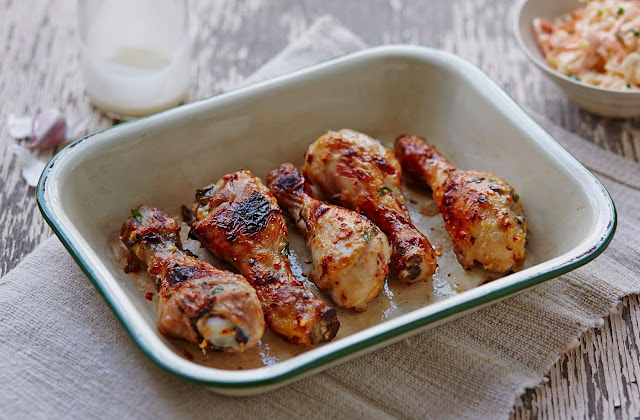"Lettuce are available in a vast number of varieties, and are either crisp or floppy, growing from a central stalk to form a spherical or lozenge-like head. Most of them have green leaves, some with red tinges, and they all have a delicate, clean flavour.
Lettuce is mainly eaten raw in salads, though you can also add them to soups or braise them as a side dish. Crisp leaves work well with robustly flavoured dressings, while the floppier types need to be partnered with something more subtle.
Among the most commonly available floppy lettuces in the UK are Round, Butterhead, Lollo Rosso, Escarole, Oak Leaf and Little Gem. Crisp include Iceberg, Cos, Curly Endive (also known as Frisée), Web's Wonder and Romaine.
Availability
All year round. British lettuce are in season from early May through to December.
Choose the best
Lettuces need to be really fresh to taste good, so avoid any that show any signs of wilting (though the outer leaves of the crisp varieties often reveal fresher leaves beneath when removed) or yellowing.
Prepare it
Pull off as many leaves as you need from the base, then wash, drain and shake well (but gently, as they bruise easily) to dry them. It's worthwhile investing in a salad spinner if you eat a lot of lettuce, as it dries them much more efficiently. Don't allow lettuce to soak in water, as it softens the leaves.
Store it
In a perforated bag in the fridge. Soft lettuces will last around one or two days, crisp varieties a day or two longer.
Cook it
Dress and serve in a salad. Shred and add to a spring or summer vegetable soup just before the end of cooking. Braise with peas (20-30 minutes). Brush with marinade, then grill halved crisp lettuces like Romaine on a barbecue, three minutes each side.
Alternatives
Alternatives
Try lamb's lettuce or baby spinach"
For more lettuce varieties
See here
Recipe Suggestion
Garden Salad
which is crunchy, herby and fresh
and dressed with a light garlic and parsley vinaigrette
recipe details are here
A variety of articles and recipe ideas are within this blog, but please note, not all may be suitable for you.
If you may have any food allergies, or underlying health issues these must always be taken into account. If you are a diabetic and not sure how certain foods may affect your blood sugars, test is best, i.e. use your meter.
All the best Jan



































